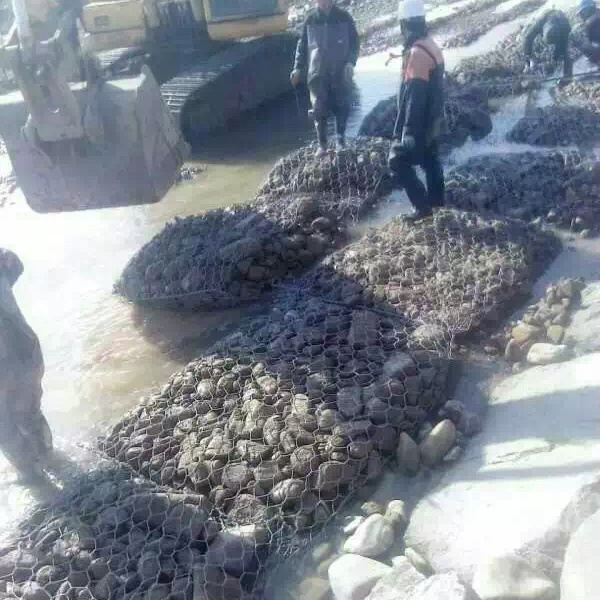Окт . 21, 2024 10:37 Back to list
Effective Gabion Walls for Stabilizing Riverbank Erosion and Enhancing Landscape Aesthetics
The Best Gabion Wall for River Bank Protection
In recent years, the need for effective riverbank protection has become increasingly critical due to rising water levels, intensified storms, and human activities that threaten the natural ecosystems. One of the most effective solutions in this regard is the use of gabion walls. These structures not only serve a functional purpose but also enhance the aesthetics of the environment. In this article, we will delve into the benefits, construction, and applications of gabion walls for river bank protection, showcasing why they may be the best choice for anyone looking to preserve the integrity of their riverbanks.
What is a Gabion Wall?
A gabion wall is a structure made of large wire mesh cages filled with rocks, stones, or other suitable materials. The term gabion is derived from the Italian word gabbione, which means big cage. These walls are designed to retain soil and prevent erosion, making them particularly effective for riverbanks, slopes, and other vulnerable areas.
Benefits of Gabion Walls
1. Erosion Control The primary purpose of gabion walls is to control erosion. By stabilizing the soil, they prevent the loss of land along riverbanks and promote a healthier ecosystem.
2. Cost-Effective Compared to traditional retaining walls made of concrete or stone, gabion walls are often more affordable. The materials used for filling the cages are usually inexpensive and widely available.
3. Flexibility and Adaptability Gabion walls are not rigid and can adapt to the contours of the landscape. This flexibility makes them ideal for uneven terrains that typically characterize riverbanks.
4. Environmental Benefits Gabion walls promote vegetation growth by allowing water to seep through while providing solid support for plants. This can help restore natural habitats and promote biodiversity.
5. Aesthetic Appeal Unlike concrete walls, gabion structures can be designed to blend harmoniously with their surroundings. They can be filled with various materials, including colorful stones, enhancing the visual appeal of the area.
6. Durability Gabion walls are robust and can withstand harsh environmental conditions, including flooding and heavy rainfall. Their durability makes them a long-term solution for erosion control.
Construction of Gabion Walls
best gabion wall river bank

Building a gabion wall involves several key steps
1. Site Assessment It's essential to assess the site to determine the best placement of the gabion wall in relation to the riverbank.
2. Material Selection Choose sturdy wire mesh for the cages and select appropriate filling materials. Rocks that are of varying sizes can be used to enhance the stability of the wall.
3. Assembly The wire mesh cages are constructed on-site or pre-fabricated. Once the cages are ready, they should be filled with stones, ensuring that the filling is tightly packed to enhance stability.
4. Placement After assembly, the gabion cages are placed along the riverbank, ensuring they are securely anchored to prevent movement during floods.
5. Maintenance While gabion walls require minimal maintenance, periodic inspections are recommended to check for any structural issues or erosion around the wall.
Applications of Gabion Walls
Gabion walls are versatile and can be used in various applications, including
- Riverbank Stabilization Protecting against erosion along riverbanks, ensuring aquatic ecosystems remain undisturbed. - Landscaping Beautifully crafted gabion walls can serve as retaining structures in gardens or parks. - Roadside Protection Preventing landslides and stabilizing slopes adjacent to roads or highways. - Flood Control As barriers against floodwaters, helping to protect property and infrastructure.
Conclusion
Gabion walls present an exceptional option for river bank protection. Their many advantages, including cost-effectiveness, aesthetic appeal, and environmental benefits, make them a sustainable choice for managing erosion and preserving the natural landscape. As environmental challenges grow, embracing innovative solutions like gabion walls can ensure that our riverbanks remain protected for generations to come. Therefore, for anyone considering effective riverbank stabilization, investing in a gabion wall could be the best decision they make.
-
hesco-gabion-baskets-for-coastal-erosion-prevention
NewsAug.22,2025
-
longevity-and-durability-of-river-rock-gabion-walls
NewsAug.22,2025
-
how-to-integrate-gabion-3d-walls-in-urban-planning
NewsAug.22,2025
-
reno-mattress-gabion-applications-in-civil-engineering
NewsAug.22,2025
-
how-to-install-wire-mesh-for-gabion-baskets-properly
NewsAug.22,2025
-
best-materials-for-filling-a-chain-link-gabion
NewsAug.22,2025
-
Wire Mesh Thickness Impact on Gabion Wall Load Bearing
NewsAug.12,2025






